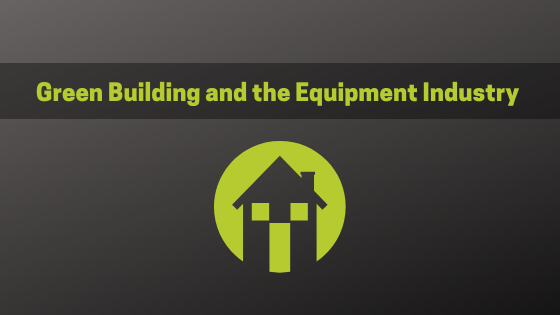
Green Building and the Equipment Industry

A shift toward more heavily investing in electric-based equipment has been announced by a major manufacturer.
Volvo CE, a subsidiary of the Volvo Group which focuses on the development of construction equipment, announced that it will stop manufacturing diesel engine-based compact wheel loaders and compact excavators, according to a press release distributed by the company. By mid-2020 it will begin to launch a range of electric compact excavators (EC15 to EC27) and wheel loaders (L20 to L28). This development is indicative of the industry-wide trajectory of investing in electric-based machines.
The organization referenced the successful implementation of their preceding electric-based machines as a factor in this shift.
“With this move, Volvo CE is the first construction equipment manufacturer to commit to an electric future for its compact machine range,” the company announced. “This follows an overwhelmingly favorable reaction from the market after the successful unveiling of a number of concept machines in recent years, and by working closely with customers. This move is aligned with the Volvo Group’s strategic focus on electromobility in all business areas.”
Volvo CE is among other companies in the construction equipment industry focusing on creating machines which fulfill the needs of projects requiring greener alternatives, i.e. electric options. JLG Industries, for example, is one company that both offers electric and hybrid options and forthrightly asserts their commitment to sustainability.
JLG has been a pioneer in producing environmentally friendly lift and access equipment while also continually seeking out and embracing new ways to be more sustainable in their operations, according to their website. The company states that sustainability guides their responsibility to the environment and to their customers, who demand green solutions.
With green construction evolving into a rapidly growing field and many companies committing to sustainability initiatives, the demand for products that reinforce resource-efficiency is expanding, according to eSUB, a company which designs software specifically for the construction industry.
Green building is a holistic concept that starts with understanding that the built environment can have profound effects, both positive and negative, on the natural environment, as well as the people who inhabit buildings every day, according to the U.S. Green Building Council. Green building is an effort to amplify the positive and mitigate the negative of these effects throughout the entire life cycle of a building.
Green technology, or products that can create a carbon neutral footprint, is one of the 2018 construction industry trends that is expected to carryover to 2019, according to eSUB.
Along with a growing demand for greener solutions, investing in electrical equipment is forecasted to yield relatively steady, long-term appreciation, according to Value Line, an organization which provides investment research on companies, industries, markets and economies.
Creating engines and machines that are energy-efficient is becoming increasingly more lucrative as government incentives expand.
For example, the Environmental Protection Agency (EPA) will award $40 million in Diesel Emission Reduction Program (DERA) grant funding in the current fiscal year.
“By financially supporting projects that upgrade aging diesel engines, EPA is helping improve their efficiency and reduce air pollution throughout the nation,” said Andrew Wheeler, the acting administrator, in a press release.
Though Volvo CE has announced the reduction of diesel engines in their compact machine line, progress has been shown in equipping larger machines for electric-based operation.
In 2017, a partnership between two Swiss companies converted a Komatsu dump truck with a giant 700 kWh battery pack, according to Electrek, an organization which tracks the transition from fossil fuel transportation to electric. This one feat has an impressive impact in terms of fuel savings and emission reduction.
An even more prodigious project was completed by ForSea (formerly HH Ferries Group) when they converted the diesel engines in two of their massive ferries to completely battery-powered systems, according to a press release distributed by ABB, a pioneering technology company which was involved in the transition.
The 780-foot ferries carry 7.4 million passengers and 1.9 million vehicles between Sweden and Denmark annually, according to Electrek.
With the growing green building trend, government incentives and a focus on sustainability by many organizations, progressions in the electric-based equipment market are likely to continue.
Back to News
Subscribe and unlock cutting-edge equipment insights, trends and tips!
Subscribe